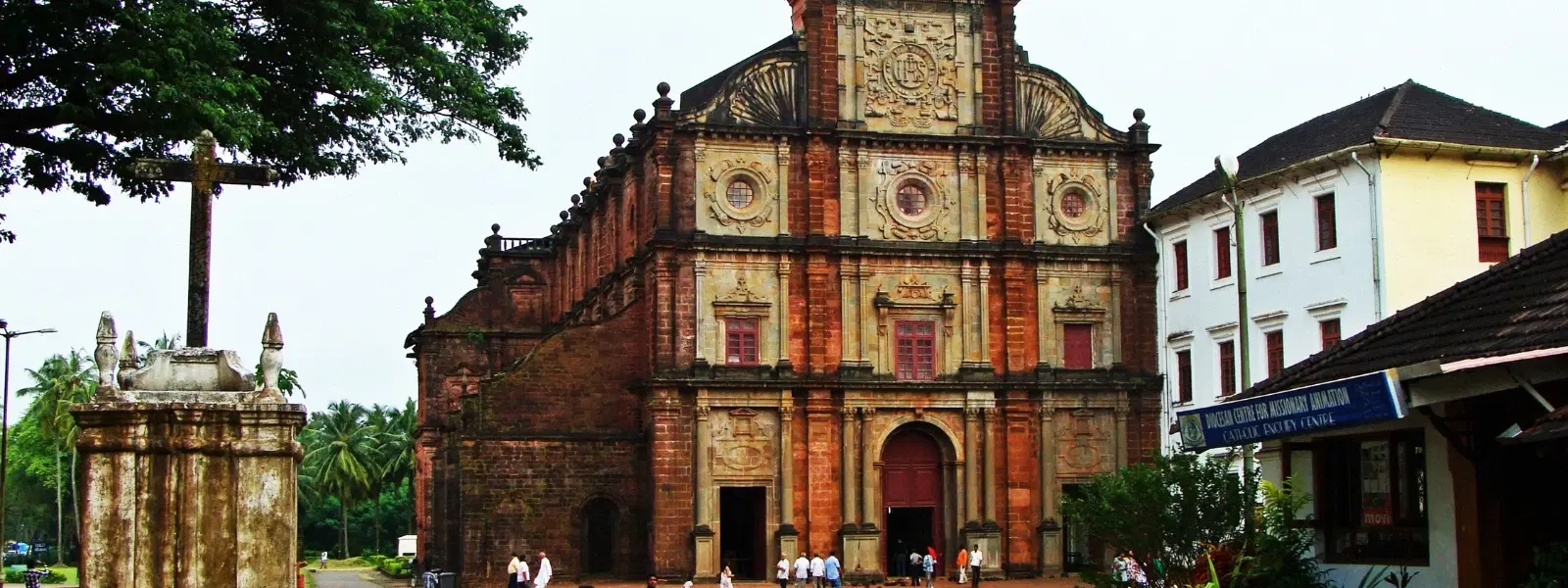
Flights
•04 min read

Abandoned churches in India evoke a sense of mystery and allure, where every crumbling wall tells the tale of a bygone era. These hidden gems are imbued with the rich blend of history, striking architecture, and enigmatic legends, inviting travelers to explore their forgotten allure.
These historic churches, remnants of India's colonial past, serve as a bridge between the architectural finesse of Portuguese, Gothic, and Baroque designs and the vibrant cultural tapestry of the subcontinent. In this blog, we answer frequently asked questions about abandoned churches in India, revealing insights into their origins, significance, and the captivating myths that surround them.
An abandoned church is one that has been deserted over time, often left to the whims of nature and neglect. These sites typically arise due to shifts in local populations, the fallout of natural disasters, or significant political and economic changes. With many once-grand structures now standing silent, these forgotten religious sites in India continue to hold deep cultural and historical value.
The connection to India's colonial history is unmistakable. These old churches not only showcase European architectural influences but also underline the transformative period of social and cultural exchange. Notable examples include the Shettihalli Rosary Church in Karnataka, known for its seasonal submergence during monsoons, and the iconic St. John the Baptist Church in Mumbai, now a haunting silhouette of the past.
Several factors contribute to the abandonment of these churches. Natural disasters, such as floods and earthquakes, have taken their toll, while shifting populations and migration trends have left these architectural marvels without communities to sustain them. Political upheavals and economic hardships further led to a lack of maintenance, allowing once majestic structures to crumble and lose their former splendor.
The landscape of abandoned churches in India is dotted with structures that stir the imagination and draw history enthusiasts from far and wide.
This church is a unique marvel that becomes partially submerged during monsoon rains. Its architectural design combined with its seasonal transformation creates a surreal and moving experience for visitors.
With haunting legends woven into its history, this once-prominent church now stands in ruins, a silent keeper of the stories of a bustling past.

Among the oldest churches in India, Bandel Church has a venerable standing in religious history. Its abandonment is steeped in tales of faith and the gradual ebb away of its once-cherished congregation.
Known for its eerie reputation and the legends of three mystical kings, this church offers an atmosphere of mystery and introspection, echoing the timeless stories of its origins.
The allure of haunted churches adds another dimension to their mystique. Sites like St. John the Baptist Church and Three Kings Church are often the subject of ghost stories and paranormal encounters. Visitors and locals alike share spine-chilling anecdotes that amplify the eerie charm and draw thrill-seekers to these historic sites.
These abandoned churches are not merely relics of the past but also serve as architectural masterpieces. Their designs reflect a melding of Gothic, Baroque, and Portuguese influences that highlight the artistic ingenuity of a bygone era. Each structure stands as a testament to the cultural and religious diversity prevalent in India during the colonial period.
Beyond their visual splendor, these ancient Christian sites in India embody centuries of history and belief. They symbolize the confluence of faith, art, and colonial influence, making them a subject of admiration despite their neglected state. Preservation efforts vary widely; while some are carefully cared for, many continue to be left to the ravages of time and nature.
Expanding the narrative to include other Christian ruins, such as those on Ross Island in the Andamans, adds further depth to the story of colonial religious influence. These deserted churches and ruins across India provide poignant insights into the historical spread of Christianity and the lasting imprints it has left on the cultural landscape.
The legends surrounding these abandoned churches are as enduring as the structures themselves. Many of these sites are whispered to be haunted by the spirits of the past, lending them an intriguing, almost otherworldly, aura. Local folklore enhances this mystique, with stories passed down through generations that speak of unexplained sounds, apparitions, and enigmatic events.
This mix of haunted legends and local myths not only enriches the narrative but also enhances their tourism appeal. Adventurers and curious travelers are drawn to these sites, eager to experience firsthand the eerie calm and profound history that cloaks these abandoned religious places in India.

Some abandoned churches in India, like the Shettihalli Rosary Church, are seasonal wonders. During monsoons, the church partially submerges, creating a surreal and hauntingly beautiful sight.
No, Bandel Church is not considered haunted. It is one of the oldest churches in India and holds significant historical and religious value.
The 500-year-old church in India is the St. Francis Church in Kochi, Kerala, built in 1503 by Portuguese explorers.
Churches often fall into abandonment due to population migration, natural disasters, insufficient maintenance funds, and changes in religious demographics.
The haunted church in Andheri East is St. John the Baptist Church, renowned for its eerie legends and ghostly tales.
Shettihalli Rosary Church in Karnataka is unique because it partially submerges during the monsoon season, offering a stunning and mysterious visual spectacle.
Abandoned churches in India encapsulate tales of historical grandeur, architectural brilliance, and fascinating folklore. These forgotten religious sites invite us to reflect on the passage of time and the enduring legacy of India's colonial narratives. Exploring these ruins not only expands our understanding of history but also reminds us of the importance of preserving cultural heritage for generations to come.